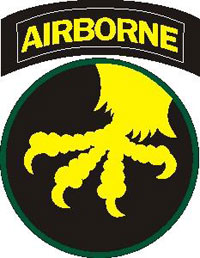
CHARLES & ALBERT DAVIS
|
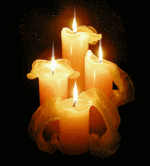 |
|
It's with great sadness that I must inform you
of the death of Charles Davis. He passed away on July 22, 2021. We should never forget that this man has done for us; Rest in Peace
Charles thank you so much for our freedom. God Bless you! |
Many thank you to Gregory de
Cock for the article about Lynn.
Thank you Lynn and his family for their
kindness.
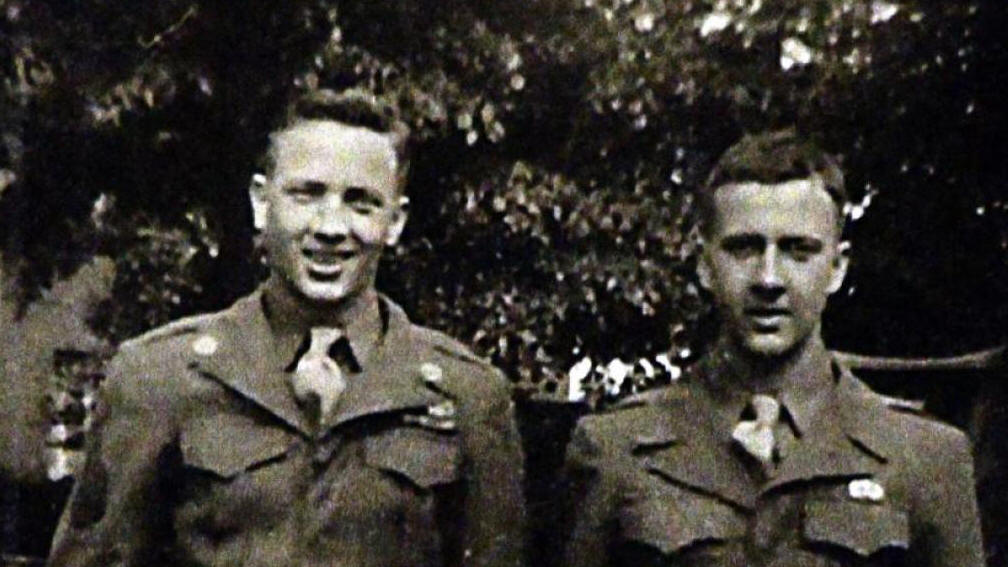 <= Charles et Albert Davis
coming home in 1945
<= Charles et Albert Davis
coming home in 1945
And today =>
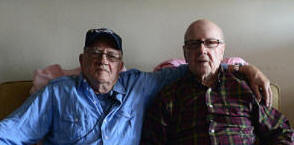
From the child of Pittsburgh to the technician of Camp Forrest
Charles
Hughes Davis and his twin brother Albert Melville Davis were born in Pittsburgh,
Pennsylvania, on 17 November 1924. They spent they early years in Mount Lebanon,
Allegheny County, in Pennsylvania. Then on 3 April 1943, at the age of 18, they
were both drafted. Charles remembers thinking,
« When
I opened the letter, I immediately thought of that recruiting poster showing
Uncle Sam in his colored striped suit, pointing his finger at me and urging
people to enlist. I had a moment of doubt and I was about to ask him what his
second option was… »
In order
to make sure that they would not be separated, and could keep an eye on each
other, their father requested the Pennsylvania Senator to allow them to serve
together. Although the military administration did not usually support this kind
of request, they were granted permission. Charles got the ASN 33676796 and
Albert ASN 33676765. They were male Caucasian American Citizens, singles without
descendants, both with four years of high school. From then on, their lives and
experiences were to be identical. A few days after their induction, they arrived
at Camp Mackall, near Hoffman, North Carolina, where the 17th Airborne Division
(17thAD) had just been activated on 15 April. The camp, mostly made of tarpaper
and wooden barracks, nevertheless provided some cultural and sports facilities.
Thanks to
their good marks on intelligence tests taken at the Induction Center, the two
Privates were assigned to the 517th Airborne Signal Company (517ASC) of the 17th
Airborne Division, under the command of Major Joseph P Ahern. Because of the
nature of its missions, this unit was closely connected to General William
Maynadier Miley, commanding officer of the 17th AD, ensuring the proper
dispatching of messages between Headquarters and the different elemnts of the
division. The motor pool included mostly jeeps, pickup trucks and trailers to
carry personnel and equipment. « We were both part of the Message Center
Section, the central place for coding and decoding messages, and their
dispatching towards different places. We were essential to the proper
performance of every unit, and that is the reason why we always stuck close to
Headquarters, ready to transmit any order from division or share information. »
After
basic training and being assigned as communication specialists, they then began
Glider Training, which ultimately allowed them to earn their wings at the nd of
December 1943. Because of their technical specialty, they were quickly promoted
to Private First Class and then to Technician 5th Grade. In March 1944, the
Division left Camp Mackall to take part in the weeks-long Tennessee Maneuvers,
along with many other units of the Army. The objective was to simulate large
scale maneuvers in order to test nd improve every unit involved.
On 27
March 1944, following this large-scale deployment, the 17th AD settled in Camp
Forrest, next to Tullahoma, Tennessee, to resume training. The facilities were
much more adequate and comfortable than theprevious ones. Living in better made
life easier for the soldiers, in June 1944, Miley decided to set up his own jump
school in order to qualify the Glidermen who volunteered. Albert, unlike Charles
volunteered and got this second badge. Like other unit, the 517ASC included men
wearing either or both airborne badges. Still in Camp Forrest, the twin brothers
were promoted to Technician 4th Grade. According to the Technical and Specific
aspects of their job. This is when Charles became Chief of the Message Center, a
Non-Com in charge of the daily routine ; quite a responsibility indeed.On 11
August 1944, the 17th AD made preparations for an imminent overseas movement,
and all passes were canceled.
« Aware
of what this order meant, Albert decided to go AWOL for a few days and go to see
his parents. I tried, to no avail, to persuade him not to do that. First Lt.
David O Jesberg noticed my brother had missed roll call and questioned me at
lenght. He eventually rejoined the company and received three punishments :
demoted to Private, loss of his jump pay and a transfer to the Wire Section.
This section was tasked with the laying and maintenance of telephone wires
within the units of the Division, and to carry the heavy rolls. In combat
situations, this assignment proved very dangerous because of its constant
exposure to enemy fire. »
The two
brothers reached Camp Miles Standish in Taunton, Massachusetts, their last
stateside posting before the great overseas voyage, embarking from the Port of
Boston on August 20th.
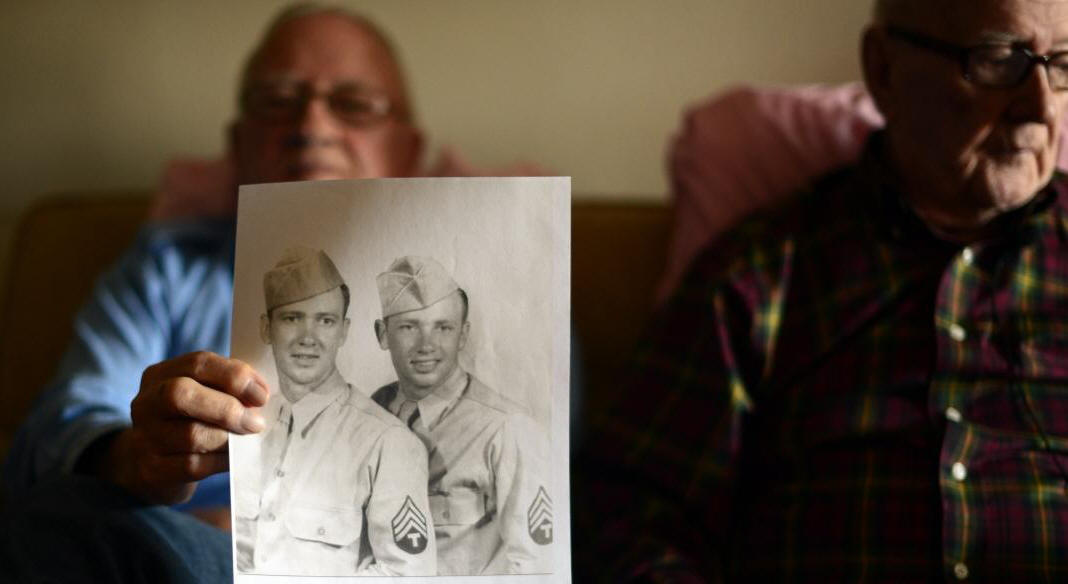
Charles show a picture of him
and his brother taken in 1943 in USA.
He was both the rank of Technician 4th Grades.
Then Came Europe
After
crossing the Atlantic, docking in Liverpool, United Kingdom, and a railway trip
towards the south, Charles and Albert arrived at Camp Chiseldon near Swindon,
Wiltshire, on 30 August 1944. They both received new personal equipment, which
included the US MA folding stock, .30 caliber carabine. Their fate changed
significantly when Charles was appointed Jeep driver, and Albert got to drive a
pickup truck.
From then
on, they carried heavy and cumbersome special equipment. In preparation for
Operation Market-Garden due to take place in the Netherlands on September 17th,
the 17th AD was placed in reserve on the 82nd and 101st Airborne Divisions,
ready to jump into the fight, whenever needed. A bad turn of events convinced
the Allied High Command not to commit the division, avoiding unnecessary losses.
The division became attached to the XVIII Airborne Corps, First Allied Airborne
Army, under Lieutenant General Lewis H Brereton. While Chiseldon, Charles Davis
was promoted to Technician 3rd Grade. Day and night training resumed keeping the
men fit and tuned to their specialties.
« Although
Albert was now part of another section, we got plenty of opportunities to get
together and share some good times while on leave in London. »
Following
the German attack in the Belgian Ardennes on 16 December 1944, the 17th AD was
quickly alerted and made ready to move to the continent. Within a few days, and
in spite of degrading weather conditions, men flew by plane, then trucks or
traveled by boat and train to reach the Moumrlon-le-Grand Barracks near Reims,
Marne Department, France. Those who got to fly took off from Chiboldon Airfield,
Wiltshire, and landed close to Mourmelon. Vehicles and heavy equipment followed
by boat and train within the next few days from Le Havre. The division spent
Christmas in Mourmelon, in a lousy mood, as snow started to fall and negative
temperatures settled in. In order to prevent the enemy onslaught to spread out
beyond the Belgian border, the division was ordered to protect the left bank of
the Meuse River, between Givet and Verdun. On December 28th, Charles’s company
was billeted in Charleville-Mézières, Ardennes Department, until 1st January
1945 when they prepared to move out.
On the next day, at 10.00, the division started
out north, heading for Neufchâteau, Province of Luxemburg, Belgium, reaching the
destination at 15.32. The convoy stopped briefly for over an hour, and then
proceedeed to a small patch of woods where the men settled down for the night.
From now on the division was under Troy Middleton’s VIII Army Corps, a part of
General Patton’s Third Army.
From a small Belgian Hamlet to the Reich Doorstep
On 3
January 1945, the engines were started at 10.30 and the division moved out
toward Morhet, some 10 miles south west of Bastogne, where division HQ set up
its command post within the church rectory. Vehicles and trailers used by the
Divisional HQ and the 517 ASC were parked in the fields facing the church. Under
T/3 Charles Davis’s scrutiny, the Message Center went quickly into action. As
for Albert, he went on to lay telephone wires to connect all the units about to
enter combat against the 5.Panzer Armee, with the front line between Houmont and
Mande-Saint-Etienne, only a few miles away.
« On reaching Morhet, our guys went on to lay telephone wires. One guy started
digging along the hedgerow separating the rectory garden and the cemetery when
his entrenching tool hit something that sounded like glass. He had just found
the liquor hid by the local priest. Sure made these guys day ! »
Altough
Charles enjoyed much better living conditions away from immediate danger than
most fighting units, he still had to endure the hardships of winter, the intense
cold, the thick snow and freezing wind. Working from inside a building made him
a lucky guy. Traces of former combat were visible everywhere ; houses burnt to
the ground and streets and fields full of wrecked or abandoned vehicles. The
17AD relieced the 11th Armored Division, which had been operating in the area
for few days. The mission consisted of a division to attack north from the
western part of Bastogne, and linkup with Lieutenant General Omar N Bradley’s
First Army attacking to the south.
In took
the night for the company to set up its equipment and establish a functional
communication and telephone network between all the units who were receiving
their baptism of fire since dawn. The echo of VIII Army Corps heavy guns
pounding on the front line was shaking the village streets but not one German
shell fell on the village. Men of the company worked tirelessly from then on to
manage the proper servicing of all lines and equipment. To comply with its
mission objectives, the 517ASC was dispatched within the division. Its
specialists were needed just about everywhere. Communications became an
essential strategic issue for the coordination of all units, their proper
location and exchange of information.
Since
leaving Mourmelon, the winter conditions had worsened, making things harder and
harder. As days went by, the thick fog, the intense cold, frost and thick knee
deep layers of snow were making it worse for the soldiers.
« We
were not really well equipped to fight in winter conditions ; we did not have
wool clothes, or hardly. Many men got frost bites early as we entered combat.
Being inside the Message Center avoided me getting frostbite. »
On
January 15th, at 14.30, after spending two weeks in Morhet, the company moved
out towards Wigny, where it settled down just before nightfall, at around 16.10.
Again, a new telephone network had to immediately be set up. Soon after, a small
detachment of the recon unit got underway to make contact with the General
Headquarters at Château Celly, near the hamlet of Lavacherie, way behind the
front line. On 17 January 1945, Miley moved his command post to Bertogne, then
to Compogne to stay in touch with the division. Those two villages were located
alongside the Houffalize road, the escape route of the Germans to the north east.
Following the combat troops, the 517ASC always stayed close to General
Headquarters, inside Tavigny Castle on January 22nd, and in Steinbach on January
24th. On 26 January 1945, the division took Wattermal and Espeler, and pushed
the Germans back towards the northern part of the Grand Duchy of Luxemburg. From
this day on, the 17th AD went under Major General John Millikin’s III Army Corps
control. The next day, Charles and Albert Davis moved to Eschweiler, the new
central command post of the division.
On 29
January 1945, the company left Eschweiler at 7.50 on the way to Drauffelt, some
4.5 miles north, to set up camp 75 minutes later. One mile and a half further
south, at Enscherange was division HQ, closer to the front line in a valley
between Dasburg and Ubereisenbach, along the Our River, the natural border with
Germany. Drauffelt would be home of the twin brothers until February 10th, when
the 6th Armored Division relieved the 17th AD that has been in action for about
two continous weeks. This strategic move was dictated by a February 6th decision
of the Allied High Command to launch a major airborne operation in the spring,
Operation Varsity. Small elements of the division started to pull out around
February 8th at 9.45, allowing a small detachment to set up camp for the rest of
the company at a pre-designated area. For three days, small parties of men and
vehicles left the Grand Duchy, leaving a small rear guard behind to assume basic
communication duties.
On 12
February, along with the entire division, Charles’s company assembled and went
to Châlons-sur-Marne, Marne Department, France, for rest and reorganization.
This change of environment did not save the unit from providing communication
service, even this far from the front. While Headquerters and special services
were billeted in Caserne Forgeot, other units were living in a tent city, set up
among fields on the edge of town. For the second time, the 17th AD passed under
XVIII Airborne Corps command.
Of the
continuous six weeks of action, Charles mostly remembers the hardships of winter
conditions over enemy threats. However, enemy artillery left a sour memory as it
meant permanent danger. « My uniform included basic elements such as
helmet, double buckle boots, jacket and large pocket pants. To tell the truth,
we did not have much woolen stuff adapted for winter conditions. As far as
equipment, I carried my folding stock carabine and small items essential to the
Message Center, such as a coding machine. My jeep and trailer were packed with
communication equipment of diverse kind necessary to our job. » Next to all the
painful memories of the Battle of the Bulge, a feeling of invincibility
prevailed in Charles’s inner feelings. « It was a rough battle Hitler’s last
gamble. But in our young age, you tend to believe that nothing can happen to you… »
Germany as Primary Target
After a
short of R&R, the men of 517ASC began a thorough preparation for operation
Varsity. Operation Varsity was initially scheduled for early April 1945, with a
jump near the city of Wesel, on the eastern bank of the Rhine River, in Northern
Rhineland. According to plans, the « Landing Zone « N » (LZ-N) was located
between Wesel and Hamminkeln. It was the northernmost part of the territory
allocated to the 17th AD, in close contact with the 6th British Airborne
Division. The area was outlined in the West by the Emmerich-Wesel railroad track,
the Diesfordter Strasse in the north and the Hamminkeln-Wesel railroad in the
east. The area was to receive gliders transporting the 139th Airborne Engineer
Battalion (139AEB), the 224th Airborne Medical Company (224AMC) and the special
troops. Among these were the 517th ASC and a part of Division Headquarters.
Theses elements were among the last groups of gliders to arrive, in order to
reduce the chances of losses in the early hours of combat. The 441st and 442th
Troop Carrier Group (441-442TCG), 50th Wing, IX Troop Carrier Command, 9th Army
Air Force provided aircraft to the 517ASC. Some troopers were to enter the
action flying gliders, while others, divided in small groups, would jump into
the fight with combat units in order to maintain communications during the early
hours of the operation.
The
442TCG flew 48 C-47 airplanes, each towing a CG-4A glider as Serial A-19. The
442TCG took off from the British held B-24 airfield in Saint-André-de-l’Eure,
Eure Department, France, and carried part of the division artillery as well as
part of the 517ASC. In order to help pilots regroup when on the ground, the top
of the gliders had been painted with a large white « X » mark. Each of the 28
gliders assigned to the company were marked with chalk numbers from 21 to 48 on
the sides of their fuselage. The 441TCG also included 48 aircraft and 48 gliders,
as Serial A-20. They were to take off from an American airfield located in
Dreux, Eure-et-Loir Department, France. They would carry into combat part of the
224AMC and the rest of the 517ASC. These six gliders were numbered 1 to 6, with
a large letter « T » on top. This serial was to follow at 7-minutes intervals.
In order to fly the non-parachute elements of the communication company into
combat a total of 32 gliders were necessary.
On
February 23rd, General Miley alerted the 517ASC about its involvement in the
upcoming operation, igniting logistical and technical preparations. Extra
personnel arrived to beef up the existing ranks, according to the newly modified
Table of Organization and Equipment for Airborne Units. In the meantime, the
fast advancing Allied troops in Germany forced the high command to reschedule
the operation on March 24, 1945. From March 1st until 17th, under Jesberg’s
command, now a Captain, the Company rehearsed different combat situations. To
accomplish this, many meetings took place with the 6th British Airborne, the US
XVIII Airborne Corps and the Second British Army to coordinate radio frequencies
and identify coding and identification methods between allies.
The men
started packing individual and company equipment on Monday, March 19th, in
preparation for an airlift as well as ground transport. Vehicles, weapons and
communications equipment were thoroughly checked one last time. Four transport
groups were organized for the company transfer to Germany. In the morning, the
Communication Section, under Lieutenant John E Shern moved out towards the west
bank of the Rhine river to establish a new telephone network prior to the
arrival of all airborne elements of the company on the other side of the river.
The next day, the rest of the company left Châlons at 12.30 to assemble at the
B-24 airfield, one of the 12 airfields assigned to the 17th AD. The men traveled
by jeeps pulling trailers, and T/3 Charles Davis was behind one of the wheels.
Six hours later, all personnel that could not make it inside the vehicles,
boarded train wagons headed in the same direction. Simultaneously, crews of
qualified technicians and parachutists joined combat troops on their respective
airfields, constituting a fourth combat group.
On March
21st, the company’s heavy vehicles, loaded with technical equipment headed for
Germany, under the command of Lieutenant Lowell W. Mc Crary. Among those trucks
was the one driven by Albert Davis, recently promoted to Private First Class.
The jeeps that left on the previous night made it to Saint-André-de-L’Eure by
the end of the morning followed around 16.00 by railroad borne troops. On the
way, the personnel intended for six gliders climbed aboard another train that
took them to another American airfield, A-41, located close Dreux. At the same
time, a few hundred kilometers from there, the Communication section arrived
near the Rhine and immediately set to work. The next day, the men stationed on
both airfields studied maps, aerial photographs and sand tables of the drop
zones. They were billeted in tents and could enjoy some athletics and cultural
diversions.
On
Friday, March 23, 1945, a convoy of heavy vehicles arrived to reinforce the men
already on the west bank, strengthening the 517ASC’s potential. The division
communication networks in the rear became operational that same day, in order to
be connected to Headquarters and all front-line units by the next day.
This
organization was a real challange ; connecting preliminary ground forces to
already committed airborne forces operating many miles behind enemy lines and
beyond a large river. The airborne elements spent the day loading gliders and
getting ready for take-off before a global meeting with Major Ahern and Captains
Hancock and Jesberg.
March 24, 1945, Days of Days
March
24th started early for the men of the 517ASC as last-minute provisions and
equipment checks were made. At 08.00, men marched to their gliders and boarded.
Charles reminisces :
« In the morning hours of March 24, 1945, along with three buddies, I climbed
aboard the glider I had the night before loaded with my jeep. I had the highest
rank of all three. The vehicle carried lots of equipment needed by my unit to
achieve its missions. I was not the only one to land with a jeep and some of us
flew with a fully loaded trailer. Good sense prevailed and I did not sit behind
the wheel during the flight, as it could mean trouble. I felt safer sitting in
the glider than on the jeep. In reality, the company possessed over 50 jeeps,
but only a small portion of their trailers traveled by air. The heavier vehicles
were already on the Rhine River banks, waiting for the right moment to come and
meet us. »
The
aircraft took off at 09.15 and started a rather uneventful flight as far as
weather is concerned. During the first 90 minutes, heavy winds shook the glider,
without causing any delays, and then things got quieter as they neared the
Rhine. The fog between Meuse and Rhine got thicker above the objectives when
mixed up with flak fire, explosions and ground fire. As soon as they reached the
river at 11.55, gliders were met by small arms fire and anti-aircraft fire
coming from prepared positions, and the first damage occurred even before
touching the ground. Enemy intelligence had heard about the Allies offensive
since March 10th so the enemy forces were well dug in. At the same time, the
139AEB landed in the northern part of LZ N, and met stiff German resistance also
well dug in and making good use of the terrain and the surrounding buildings.
This strong opposition scattered the 513PIR that was supposed to secure this
area one hour prior to the glider landings. Paratroopers had an easier time
making ground after assembling on Drop Zone « X », a bit further south.
At 12.10,
Charle’s glider made an accurate landing in spite of heavy ground fire. Except
for some gliders that came down a little bit further up north, all gliders made
it to the pre-designated landing zone.
« Amidst
the bursts of the explosions and exposed to schrapnel, the glider was triidly
noisy, to the point one could think it was about to disintegrate. We were hit
several times by machine-gun fire or anti-aircraft fire and I could hear
shrapnel bouncing off the jeep. During the approach, the pilot let out a curse
right before the glider hit the ground, went over a slit trench and lost a wing
when we hit a tree. As soon as the glider came to a standstill, we rushed
outside and proceeded to get the jeep out, and to get away. »
Others
did not have it so good, and the company lost two jeeps and a trailer full of
equipment. Also, as they touched the ground, two gliders came under enemy fire
and were set ablaze, killing two technicians and two pilots. As they exited the
gliders, the men of the special units did not know where their buddies were, all
scattered over the LZ-N. They had to first regroup in squads and platoons. Among
thew was the second half of the Division Headquarters, under Colonel Willard K
Liebel. Confusion and the large numbrs of attacking forces were an advantage and
they ultimately overcame the German defenders. As it turned out, the 517ASC men
were not far from where Division CP was set up. They made good use of the woods
along the railroad tracks to remain concealed from hidden snipers, machine-gun
and mortar fire that slowed their progress down. It took a little less than 45
minutes for the technicians to assemble most of their men under command of
Ahern, Hancock and Jesberg. Underway, they crossed paths with British
paratroopers from te 6th Airborne Division who also had some sketchy landings.
They went through some friendly fire because from a distance, their helmets
resembled the German ones. Charles’s first minutes in Germany remain vivid in
his memory :
« When
I exited the glider in my jeep, I noticed a large trench along the railroad
track that I assumed was the Wesel-Emmerich track. I moved towards the left side
and I saw a group of British soldiers pinned down by a sniper concealed in a
nearby farm. I crawled all the way towards the building and, for good measure,
fired a few shots inside. As my landing zone was lined by two railroad tracks
and considering that the nothern part was British, I headed south looking for
guys from my company. According to my calculations, I must have landed close to
the northern border of our LZ, as I saw lrge numbers of British paratroopers and
lots of Horsa gliders mixed up with our own Waco. Or maybe they actually landed
on our LZ, way out south from their intended LZ. »
The men
of the company reached the Division HQ at 16.30, and started digging in to set
up communication equipment. They were close to the Wesel-Emmerich railroad track,
eat of the Schwarzen Wasser pond, an area soon to be secured. All night long
installation went on until firm contact was established with the secondary
division command post, on the other side of the Rhine. As early as 14.00, a Wire
Section team on the west bank had established a first connection with the front
line, laying telephone wires across the Wesel demolished railroad bridge. Around
18.30, just before nightfall, wire contact was established with the 513PIR and
194GIR, then with the 6th British Airborne Division around 20.00. Telephone
contact with the 507PIR only occured on the next morning, with the strengthening
of communication with the secondary command post. Around 22.00, the enemy
launched a counter-attack, which was repelled by a strong American defense, most
notably, men of the 517 ASC. In addition to their specific tasks, these men
conducted several security patrols around the main CP, until the next day.
The
understanding of Charles’s company actions would not be complete if one did not
mention the presence of the first half of the division headquarters during the
early hours of Varsity. Along with a handful of his closest men, General Miley
jumped at 10.02 with the 507PIR, the first elements of the 17th AD to reach DZ-W
on the southern edge of Diesford Forest. About a dozen men, including 517ASC
technicians, were the very first men of the division HQ to hit the ground.
Shortly after landing, and taking out an enemy strongpoint, they set up a
temporary CP in a field, on the eats side of the Waldstrasse and Flürener Weg
crossroads, north of Flüren. In the early hours o the attack, communications
between the temporary CP and fighting units were made through portable radio
transmitters. When the fighting decreased, six teams of five men each, from the
Wire Section, who had come in by gliders and linked up with fighting elemnts,
were tasked with laying telephone wires. Each team had a jeep with large
capacity rolls of wire. Gliders also delivered largr equipment. This equipment
allowed contact with the British Division, te Châlons based rear elemens of the
division, and XVIII Airborne Corps. Accrding to plans, by mid-afternoon and in
spite of fierce German resistance in the Diesford Forest, Miley moved his CP
north, and assembled the rest of his headquarters coming in by gliders.
Indispensable Ground Support
If the
airborne part of Varsity is widely considered a success, logistics and resupply
missions are the backbne of this success. The ground mission to support the 17th
AD was led by the division Executive Officer, Brigadier General John L Whitelaw.
As combat troops assembled on the airfields, support troops were leaving Châlons
by truck on March 20th, headed for Northern Rhineland. The next day, at 04.00 in
the morning, they entered Bree, Belgium, some 400 kilometers away. Escorted by
British MPs, the vehicles loaded with equipment, using black out lights to
travel by night, followed two different routes. Two days later, the vehicles
reached a large assembly zone between Issum and Kapellen, in Germany, some 20
kilometers west of the pre-designated crossing point. This time lapse was used
to organize the transfer of vehicles and supplies to the eats bank using
specific parking and stocking points. The first crossing of the Rhine by
amphibious truck loaded with the 517ASC equipment started on D-Day around 17.00,
and proved very efficient. At nightfall, when the first barges and pontoons were
available, the division motor pool proceeded to meet their units in the combat
zone. Among his memories of those eventful days, Charles Davis remembers what
his twin brother was doing : "On March 25th at noon, with combat raging
in the distance and still under enemy pressure, my brother and a friend of his
were consolidating the wire communication network, laying wires on the
demolished railroad bridge in Wesel. In certain places, he had to climb up
stones and find some tricks to hook up the wires. In the afternoon, he boarded
his pickup truck loaded with transmission equipment, crossed the river and
rejoined our company. He was one among the huge amount of personnel and
logistical organization that took part in Operation Varsity. »
The last trucks of the company crossed the Rhine
on March 26th, ready to push into the heart of Germany.
Chase and Hunt Eastward
Beside
the ground resupply mission on March 25, 1945, the Allied High Command had also
scheduled on the very same day the parachute drop of the 517ASC equipment. This
operation was not as successful as expected, since it occurred before ground
personnel could secure the drop zone. In addition, the bundles were widely
scattered and ripped open by ground troops, both friendly and enemy, looking for
food and supplies. Most of the special material was scavenged by combat troops,
and did not reach the company.
On Monday
March 26th, after spending the night securing technical installations and
Headquarters, the company followed the division as it moved east. From then on,
the fighting spirit of the enemy significantly faded. The next day at 14.30, a
party of 517ASC men went to Peddenberg, about 6 miles to the east, in order to
set up the necessary communication equipment for General Miley, due to arrive
shortly. The move towards the heart of Germany had begun at a fast pace. The
division was running close behind the Germans who were in a hasty retreat, only
leaving behind small pockets of resistance designed to delay the Americans
supported by British armor. During the next few weeks, Charles and his buddies
would carry on the same routine of moving their material over and over,
according to a well-practiced routine. They would never set camp very far from
General Miley’s CP. Communications between the many elements of the division
were never interrupted, a truly exceptional achievement considering the fast
changing pace of the situation. Nevertheless, the enemy threat was still very
much alive and on the morning of Thursday Mach 29th, Headquarters came under
enemy artillery fire twice, but no one was hurt. In the afternoon, the command
post was moved 6 miles to the north-east sector of Schermbeck. Leaving
Peddenberg, the convoy transporting the transmission company, was attacked by a
diving airplane, but the convoy did not suffer any casualties. The next day, at
16.30, the unit settled down at Haltern, but on the way was ambushed by a German
patrol from across a small river. In addition to small arms fire, mortar and
artillery shells kept the men on the alert.
On
Saturday March 31st, the division was placed under XIII Army Corps command, (Lieutennt
General Alvan C Gillem Jr.) an element of Ninth Army (Lieutenant General William
H. Simpson). On this day, the company faced the same situation as on the
previous day. A patrol equipped with bazookas and small arms crossed the stream
and routed out snipers concealed in houses, at the cost of one wounded man.
Typical of the ambient tension, vehicles had to be moved around 21.00 when a
shell landed a few meters from the motor pool.
« It is most likely on that same day that my brother saved a wounded comrade. He
spotted him on the other side of the stream and under enemy fire, did not
hesitate one second and dove head on into th stream and swam to his rescue. By
sheer bravery, he found a small boat and brought back the wounded man. For that
action, he was awarded a Bronze Star Medal for Valor, but Albert always remained
quite modest and humble about the dangers he faced… »
The next
day at noon, the constant threat of enemyartillery firing from the other side of
the stream ended, thanks to the allies’ big guns. Sporadic fire did not prevent
a technical team from leaving for Dülmen around 09.00, to be joined around 15.00
by the rest of the company. For two days and two nights, the men stayed in
requisitioned buildings, while the 513PIR and 194GIR were about to take the city
of Münster. On Tuesday April 3rd, the company reached Appelhülsen at 15.00 and
waited until the next day to be able to enter the city, which was finally
secured.
In the
following days, the 17AD drastically changed direction towards the southwest and
the allimportant Ruhr industrial sector. The 517ASC faithfully followed General
Miley’s HQ. The company bypassed Marxloh on April 6th, Bottrop on April 8th,
Essen on the 10th and returned to Marxloh on April 21st, where it settled until
mid-June. The Division assumed a military government position from April 12th
on, six days before firing its last shot of the war. From April 6-26, 1945, the
17AD fell under XVI Army Corps (Major General John B.Anderson), still within the
Ninth Army, then went under the authority of XXII Army Corps (Major General
Ernest N. Harmon), part of the Fifteenth Army (Lieutenant General Leonard T.
Derow).
During
that occupation time in Germany, Charles, Albert and their comrades fought off
boredom the best way they could. They took part in the denazification of the
local population, chasing out fanatics, taking care of displaced persons and
prisoners of war, as well as rounding up abandoned military items. They also
made good use of their free time by indulging in sporting events, going to the
movies, bars and other festivities organized by allied military authorities.
Vittel, Then Berlin
Starting
June 15, 1945, the division Headquarters and all specialized units left the Ruhr
Valley bound to Vittel in the Vosges Mountains, France. The rest of the division
was billeted in other eastern French towns. The 517ASC traveled by roads and
railroads, throughout Germany and France. Before their arrival, Vittel used to
be a VII Army R&R center. The men found plenty of facilities to have a good
time. Hotels in this renowned bath and thermal city had been prepared to
accommodate wounded soldiers. The Grand Hotel was particularly adapted for
soldiers. Previously a rest area for wounded soldiers, it became a leisure
resort. Many social, cultural and learning activities were organized there. It
also offered a soda and beer bar, an American Red Cross center, library, two
movie theaters and classes. Vittel was undoubtedly the most luxurious billet the
division ever had. On July 14, 1945, the 17AD paraded in front of the local
population and authorities to celebrate France’s National Day.
In
August, when the division was ordered back to the States, Headquarters and
special units were the first to leave their French billets. By this time, many
men had already joined the 13th, 82nd and 101st Airborne Divisions. The Army had
established a point system to qualify soldiers for a quick return home,
according to their military records. Soldiers with fewer than 75 points were
transferred to another division scheduled to ship out to the Pacific Theater of
Operation, or for occupation duty. Charles and Albert Davis were transferred to
the 82nd Airborne Signal Company, the communication company of the All-American
division, a unit similar to the one they had just served with. The twin brothers
went to Berlin with the 82nd Airborne Division for occupation duty. « I
have very good memories of our time in the German capital, especially since my
new unit shad few responsibilities, doing police work and military protocol. We
had plenty of opportunities to play football in the Olympic stadium. In spite of
the almost total destruction of the city, the lack of food and the black market,
we used to stroll in the streets and meet the locals. Like many Americans, my
brother met a young German girl whom he managed to bring back to America in 1947
and to marry. »
December
would bring both bothers the news they were waiting for : the trip back home !
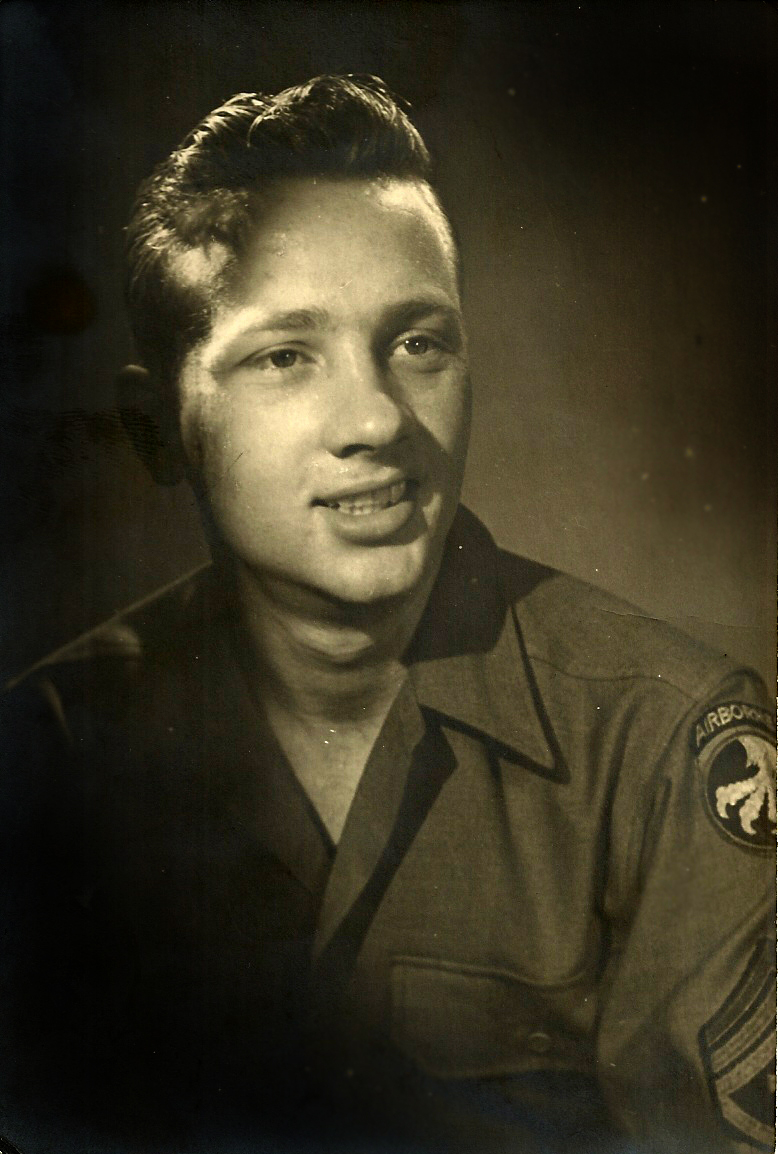
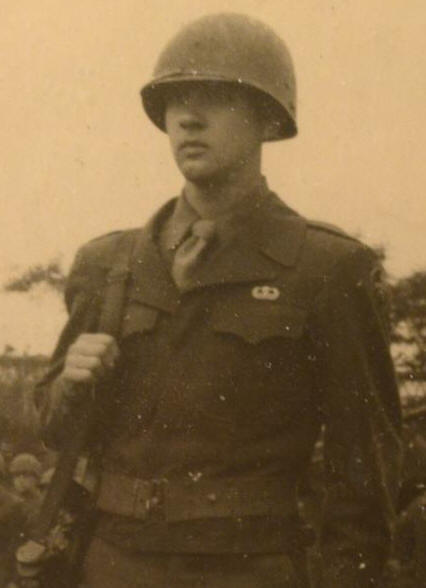
Charles Hughes Davis - Albert
Melville Davis
USA
at Long Last !
On
January 3, 1946, after spending 8 days at sea, the twin brothers arrived in the
USA and went to Camp Shanks, near Orangeburg, New York, where they prepared for
the Victory Parade scheduled for January 12th in New York City. Symbolically,
the 82nd Airborne Division represented the entire US Army. Unfortunately,
Charles suffered from an infected arm and had to go to the hospital in New York.
Albert took part in the parade without him. As compensation, Charles watched the
parade from his hospital room. Their family, on hearing of their return, paid
them a short visit in New York, their first reunion in a year and a half. The
next month, once Charles’s wound had healed, the Army sent both brothers to Fort
Indiantown Gap, Pennsylvania, to get their discharge.
For 34
months, Charles and Albert together went unscathed through the many ordeals of
their service with the 517ASC. A story that began in Pennsylvania, took them
through five European countries before they could return home. They never
crossed paths with a German soldier. « Even though we both had different
positions, we always remained close twin brothers. I was more easy-going and my
brother wwas the responsible one. Staying together strengthened our mutual
confidence and eased our minds. At the early age of 18, we felt like nothing bad
could happen to us. In fact, I do not remember ever worrying for each other. We
were so young and so naive. We could spend days away from each other and not
worry about it as we were too inexperienced to have bad feelings about it… »
Once
honorably discharged, Charles took advantage of the GI Bill, an educational plan
created by the American Government to allow war veterans to get an education. He
attended Thiel College in Greenville, Pennsylvania, and graduated in Economics.
For 30 years he was an advertising agent for Alcoa Steel Company, until his
retirment in Centerville, Ohio, where he still resides. Charles married
Charlotte May Suplinger, but never fathered children. Albert, as a kid, had
always dreamt of becoming a football and basketball coach. He also took
advantage of the GI Bill and graduated from Slippery Rock State Teachers College
in Slippery Rock, Pennsylvania, a well-renowed place for both athletics and
sports. In 1953, he got a job at Riverdale Country School in the Bronx, New
York, as an athletics and history teacher. When he retired in 1987, he was
offered a job at the school’s archives, a position he held until 1997, a career
in 44 years. Albert still resides in the Bronx.
After the
war, Charles became close friends with Major Joseph Ahern, the officer he had
served with during his military time. Both men used to meet every year in
Philadelphia to attend Army and Navy sporting events. This friendship is no
surprise, as with all due respect to the rank, Charles was familiar with all the
officiers in his company, as Chief Message Center. During one of those meetings
with 17AD veterans, Charles Davis met David Shortt, curator of the Veterans
Memorial Museum in Gerantown, Ohio. The two men quickly became friends. David’s
uncle, Kenneth Shortt had served with the 139AEB. The history of the division
represents a large portion of the collection on display, with photographs,
documents, testimonies and veteran memories. Once the first president of the
museum, Charles remains an active member.
During
this time, April 15, 1943 until September 16, 1945, the 17th Airborne Division
had 6 twin brothers on active duty. Except for one twin killed in action, all
made it through the war. In March 2017, when Charles returned to Europe to visit
the battefields where he fought, he and his brother were the last remaining pair
of twin brothers. Albert’s health did not allow him to follow his brother on
this trip.
Veteran
Technician 3rd grade Charles H Davis is credited with three campaigns, in
« Ardennes-Alsace », « Rhineland » and Central Europe ». He tolds the following
awards : « Glider Badge, Good Conduct Medal, American Thater Medal, European-African-Middle
Eastern Theater Medal with one Bronze Arrowhead and three Bronze Stars, Victory
Medal, and Army Occupation Medal with Germany clasp. Although officially Glider
qualified, he had to wait a year before receiving his badge, to be worn with
pride on his uniform, as a badge of valor. In addition to these comapgnis and
awards cited here above, his brother Private First Class Albert M Davis, is
recipient of the Parachute Badge and the Bronze Star Medal with « V » for valor.
=>
http://video.nydailynews.com/?ndn.trackingGroup=90051&ndn.siteSection=nydailynews-news&ndn.videoId=28129541
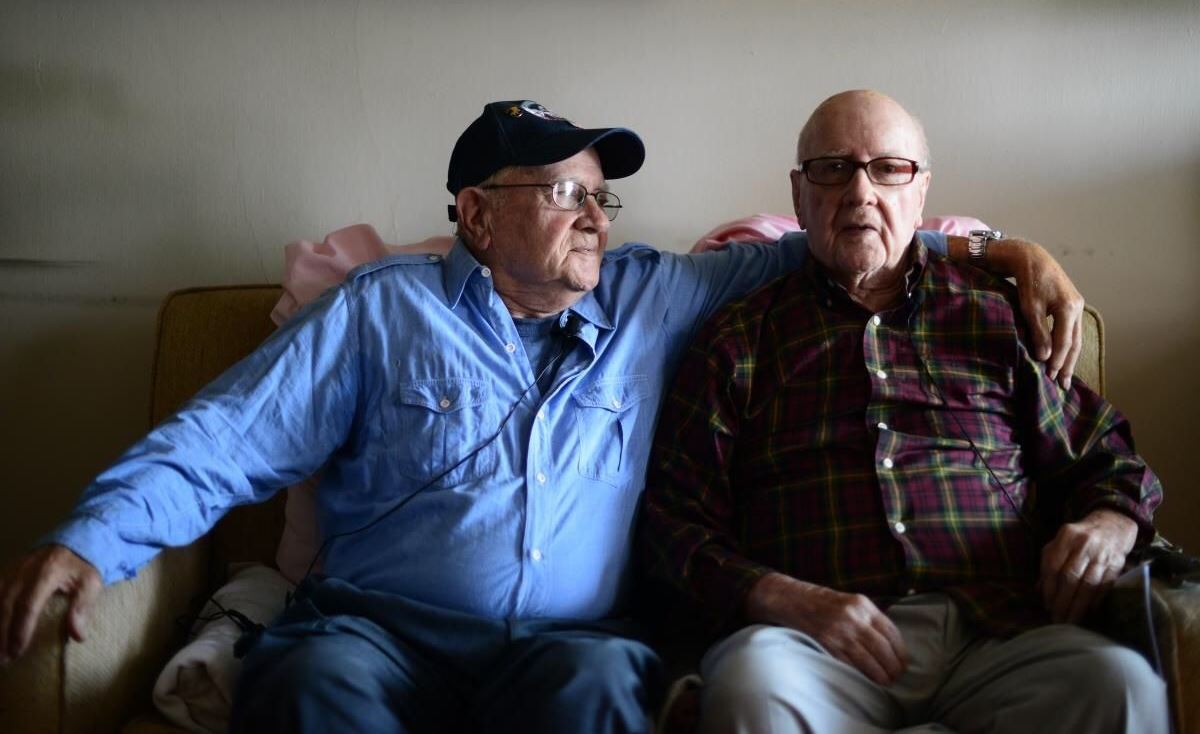
Charles et Albert today
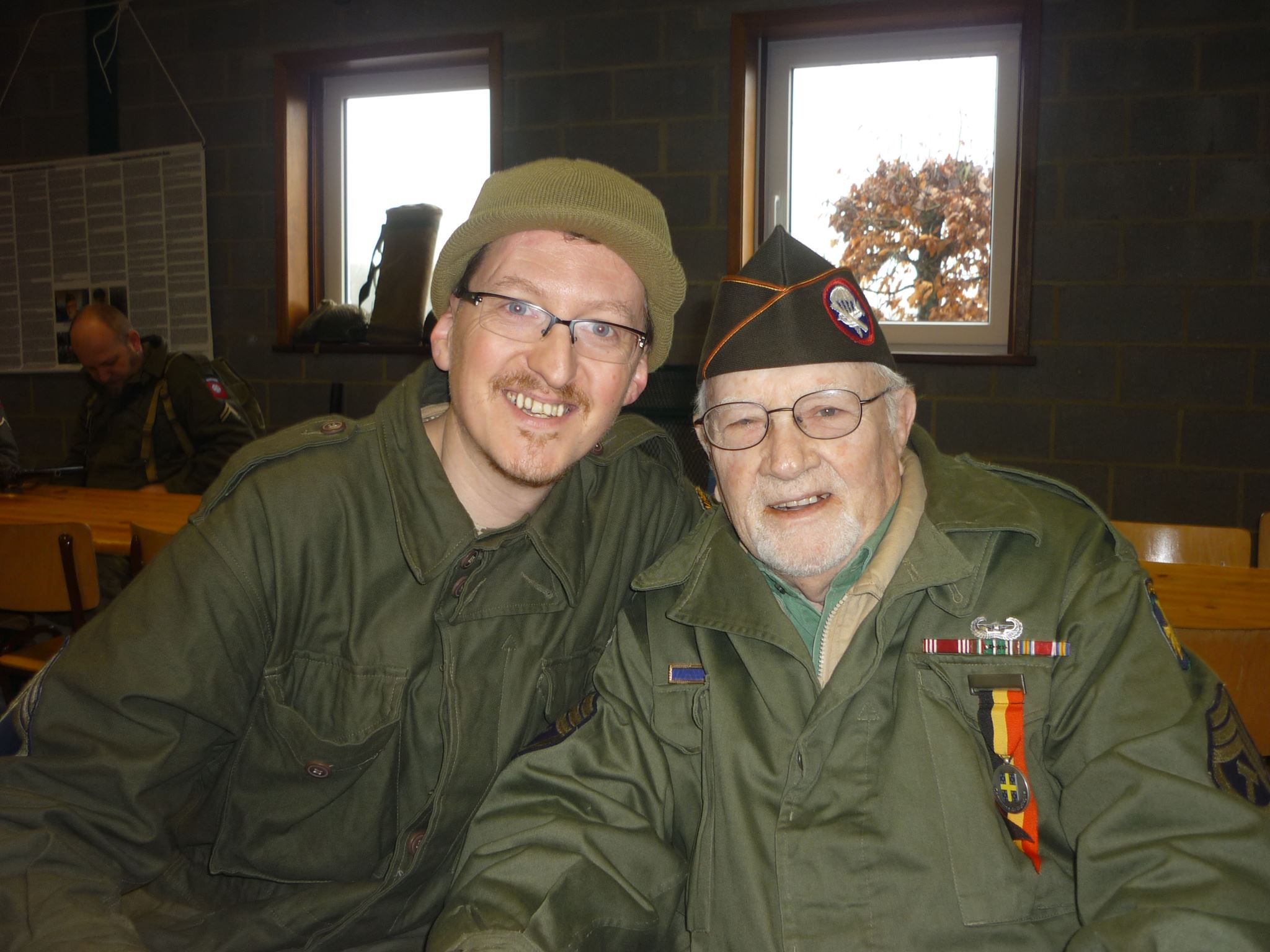
Lucky me! I have the chance to
meet Charles Davis in March 2017 during the Dead's Man Ridge March.


 <= Charles et Albert Davis
coming home in 1945
<= Charles et Albert Davis
coming home in 1945 




